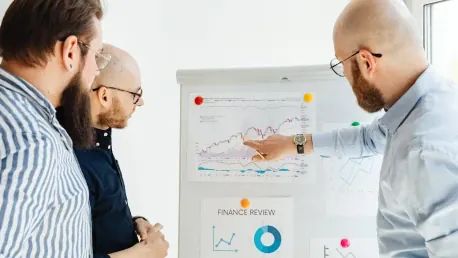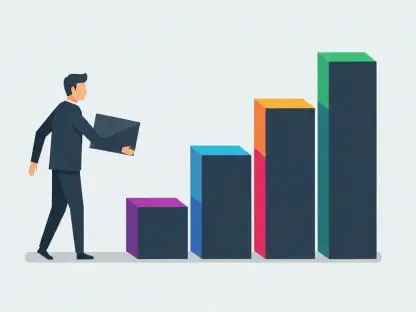As the world enters 2025, the financial landscape is marked by a blend of optimism and caution, shaped by notable changes in key areas such as mortgages, investments, and banking. The economy has witnessed significant expansion over the past year, characterized by decreasing inflation and interest rates, minimal unemployment, and a substantial rise in the S&P 500. Despite these promising developments, there remain uncertainties due to the recovery from the pandemic and the policies of a new administration. Investors, homeowners, and consumers look to navigate these evolving conditions with a keen eye on the trends forecasted for the year.
Mortgages and Housing Market
The mortgage sector was initially expected to experience a notable drop in rates throughout 2025, prompting eager anticipation from prospective homeowners. Nevertheless, the reality of market reactions to the current administration’s policies has tempered this enthusiasm. Financial experts from institutions like Zillow, Redfin, Fannie Mae, and the Mortgage Bankers Association now predict that mortgage rates will sit above 6% in 2025, reflecting a shift in expectations. This projected steadiness in rates poses challenges particularly for first-time homebuyers and those looking to refinance.
The housing market continues to thrive as a seller’s market, primarily due to persistent high consumer demand outstripping supply. Data from Freddie Mac indicates that around 5.8 million new homes have been constructed in the U.S. over the past four years, in response to the rising demand. Rob Dietz, Chief Economist for the National Association of Home Builders, emphasizes that the existing housing deficit, which took nearly a decade to form, will likely take another decade to resolve. This significant imbalance between buyers and available homes has continued to inflate housing prices. While current homeowners enjoy increased home equity, the barriers to affordable homeownership remain high for many.
Investments and Stock Market
The investment outlook for 2025 is cautiously optimistic, buoyed by a business-friendly administration, low-interest rates, and potential corporate tax cuts. These factors are expected to stimulate earnings growth, but high valuations have introduced an element of caution among investors. The S&P 500 is anticipated to deliver modest returns, accompanied by some volatility. Marta Norton, Chief Investment Strategist at Empower, predicts that large-cap stocks will benefit from improving macroeconomic conditions and the growing integration of artificial intelligence. She warns, however, that high valuations, indicating that investors are paying a premium for earnings based on expected robust growth, could lead to market fluctuations if actual performance falls short of projections.
For 2025, small- and mid-cap stocks are projected to outperform the S&P 500, benefiting from anticipated reductions in interest rates and corporate taxes. David Rosenstrock, Director at Wharton Wealth Planning, notes that smaller companies, which often rely on variable-rate debt, are quicker to reap benefits from rate reductions. Additionally, potential tax cuts could provide a substantial boost to these companies, as they typically generate most of their revenue domestically, unlike larger firms with significant international exposure. This dynamic positions them well to capitalize on the favorable economic environment expected in 2025.
Banking Sector
The banking sector is predicted to undergo notable changes in 2025, driven by adjustments to the federal funds rate. Senior economist at FHN Financial, Sophia Kearney-Lederman, forecasts a gradual approach from the Federal Reserve in easing rates throughout the year. This strategy includes 25 basis point (bp) cuts in both the first and second quarters, resulting in a target rate range of 3.75% to 4.0%, to be followed by a pause for the remainder of the year. The projection is based on assumptions that mid-year inflation will rise due to tariff pressures, and unemployment will decline as a result of changes in immigration policies. These adjustments are expected to affect the interest earned on savings accounts, money market accounts, high-yield savings accounts, and certificates of deposit (CDs), leading to potential decreases in returns if the federal funds rate drops as anticipated.
Additionally, the evolving rate environment may prompt banks to adapt their strategies for attracting and retaining customers. As the federal funds rate impacts the cost of borrowing and the yields on savings instruments, consumers might seek alternative ways to maximize their financial returns. Banks will likely need to innovate and offer competitive products to meet the changing demands of their clientele, balancing the dual goals of maintaining profitability and customer satisfaction.
Credit Cards
Credit card interest rates have already begun to decrease following earlier reductions in the target federal funds rate by the Federal Reserve, with further cuts expected in the new year. However, the precise pace and extent of these rate adjustments remain uncertain. During the 2024 Yahoo Finance Invest conference, Neel Kashkari, President of the Federal Reserve Bank of Minneapolis, stressed the importance of data-driven decisions in determining future interest rate modifications. While additional rate cuts are likely, the average credit card interest rates, currently exceeding 21%, are not anticipated to see a significant decline. Therefore, it is advisable for credit cardholders to proactively manage and reduce their balances, as delaying payments could result in higher overall debt accrual.
The anticipated trajectory for credit card interest rates in 2025 underscores the need for consumers to remain vigilant about their financial management practices. High-interest rates can quickly lead to mounting debt, and with only moderate declines expected, consumers must take proactive steps to mitigate their financial burdens. This involves prioritizing debt repayment strategies and exploring options for consolidating or refinancing existing debts to secure more favorable terms in the evolving financial landscape of 2025.
Conclusion
As we move into 2025, the financial landscape is characterized by a mix of optimism and caution. This landscape has been shaped by significant changes in key areas like mortgages, investments, and banking. Over the past year, the economy has experienced notable growth, which has been marked by decreasing inflation and interest rates, low unemployment, and a significant increase in the S&P 500 index. However, despite these positive developments, there are still uncertainties hanging over the market. These uncertainties are primarily due to the ongoing recovery from the pandemic and the new policies from the recently elected administration. Investors, homeowners, and consumers are all trying to navigate these evolving conditions with a sharp focus on the trends forecasted for the coming year. They are cautious yet hopeful as they strategize how to best handle the current economic environment to maximize their financial well-being. With the global economy in a state of flux, it is more important than ever to stay informed and adaptable.









